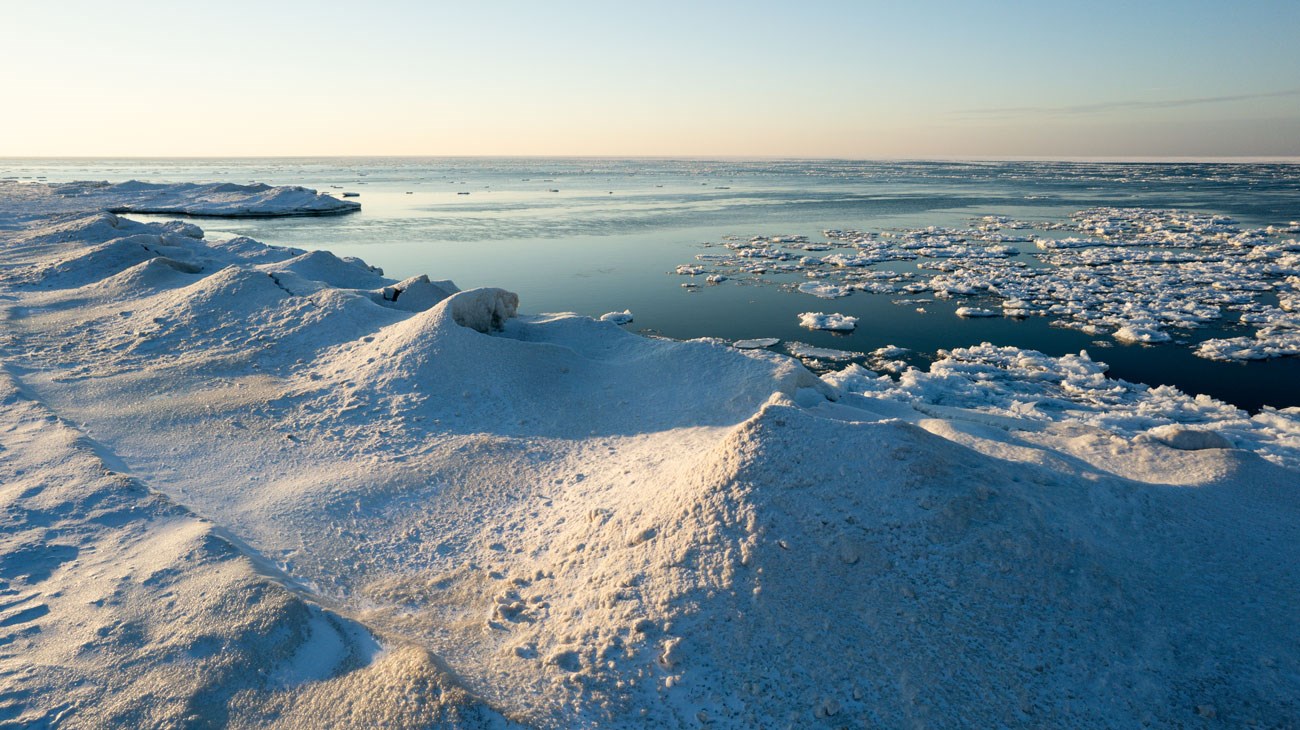
Thad Donovan Avoid Tragedy: Stay Off Ice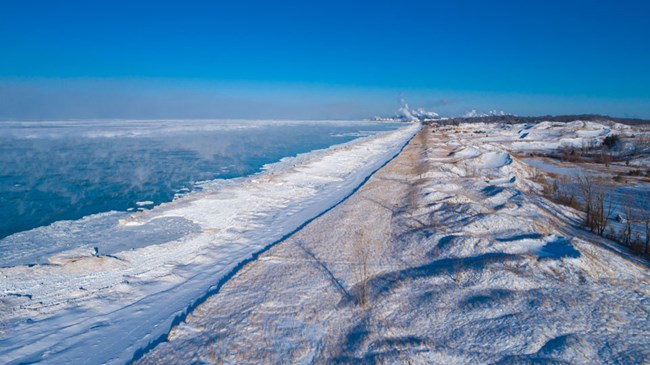
Thad Donovan Fatal AttractionThe shorelines of each Great Lake are distinctive and stunning, but Lake Michigan stands out as the deadliest of the five Great Lakes. The lake is unmistakably dangerous in the winter as frigid temperatures attempt to freeze the shore. 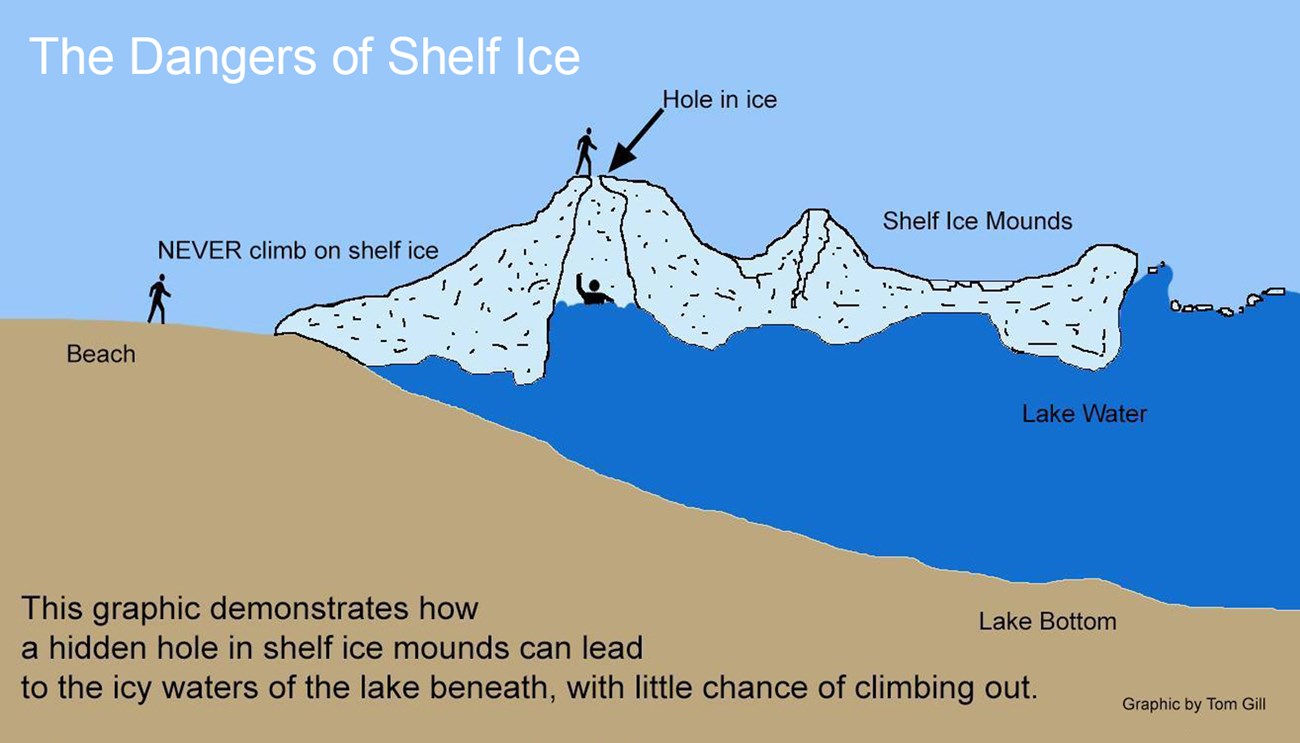
Tom Gil What is Shelf Ice?Although shelf ice appears solid, it provides only a false sense of security. Shelf ice forms when breaking waves and spray freeze in frigid air temperatures, creating irregularly patterned ice full of cracks, crevices, and holes. Shelf ice is an unstable formation that builds from the beach out to the lake, without freezing to the lake bottom. Due to the nature of its structure and fluctuating temperatures above and below freezing, shelf ice is unpredictable and unsafe to step on. 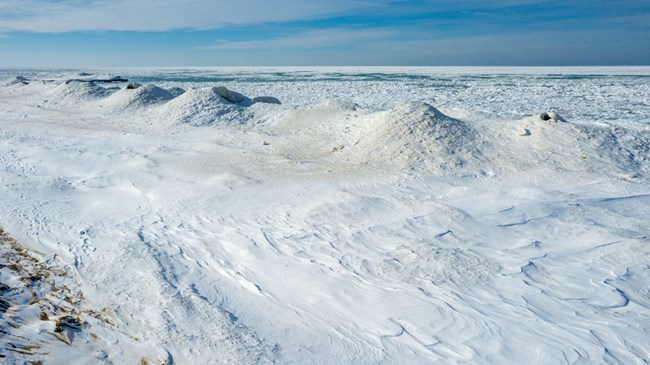
Thad Donovan Viewing Shelf Ice SafelyAlthough climbing and stepping onto shelf ice is forbidden, visitors can still experience this Arctic-like enchantment by viewing from a safe distance. Once covered in snow and ice, even frequent lakeshore visitors can have trouble determining where the beach ends and where the lake begins. To be safe, view the shelf ice from the base of the first sand dune or further inland. Only view shelf ice from solid ground, and never attempt to climb it. 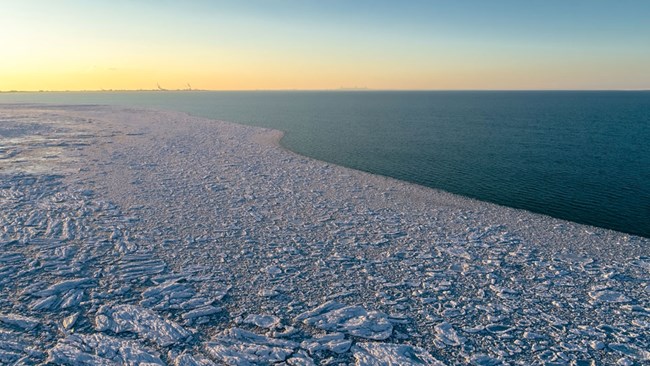
Thad Donovan How Shelf Ice FormsIn winter, Lake Michigan's temperature drops. Ice begins to form on the lake's surface and along its edges. Currents and wave action carry floating ice to the shore at Indiana Dunes National Park, and if temperatures are low enough, the ice begins to crash together, stack up and grow. 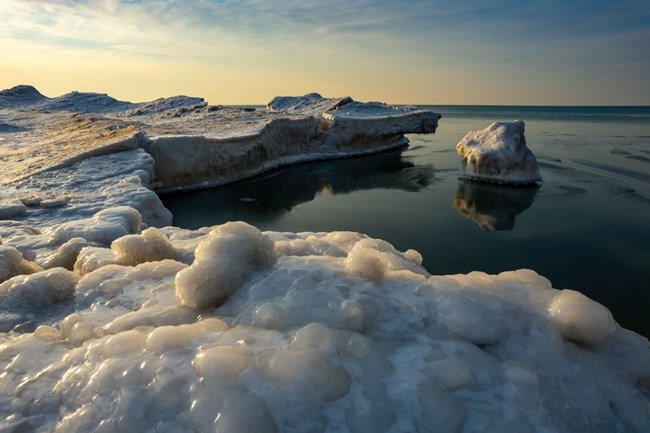
Thad Donovan Ice in MotionLake Michigan brings continual change to the shores of Indiana Dunes. Currents and waves, as well as inconsistent temperatures mean that the shelf ice's conditions are always shifting. 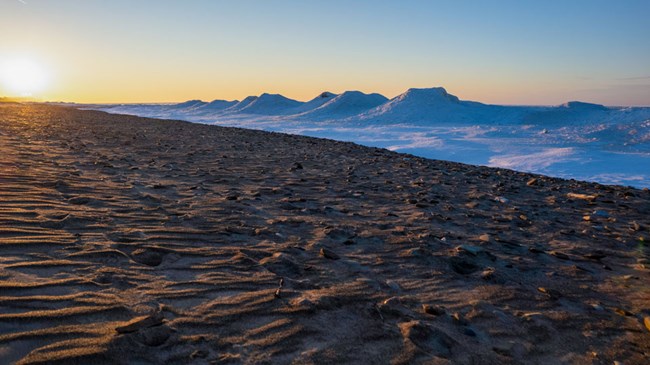
Thad Donovan Mounds and Ice VolcanoesThe forces of Lake Michigan and fluctuating temperature results in ice formations along the lakefront that come in an endless variety of shapes. Additional ResourcesFor more information on how to safely visit in cold weather, check out these Winter Hiking Tips.
|
Last updated: August 23, 2024
